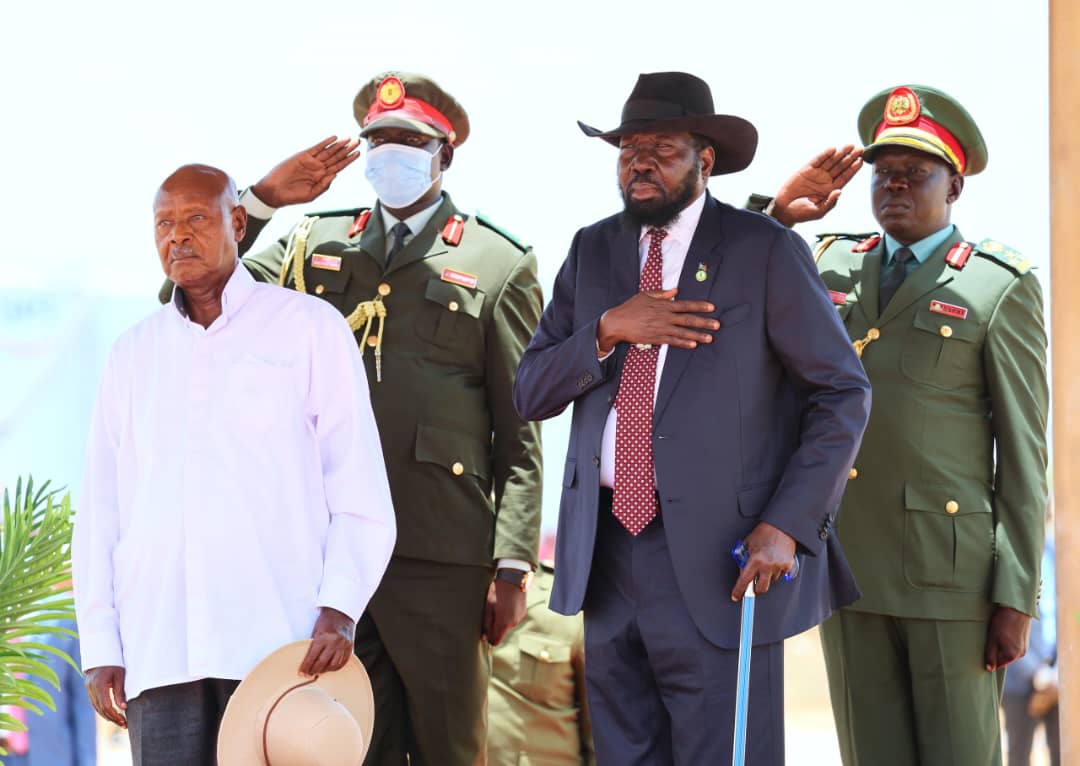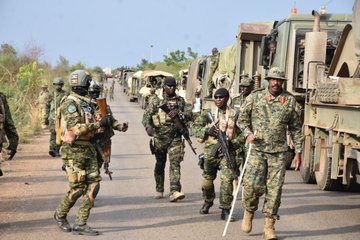Uganda has consistently established itself as one of the most trustworthy peacekeeping nations in East Africa. The Uganda People’s Defence Force (UPDF) frequently arrives with more than just boots on the ground when a conflict threatens to transcend national boundaries. This article examines Uganda’s recent military intervention in South Sudan, severe political impasse. It also illustrates how Uganda is rethinking its position in regional security by drawing parallels with the UPDF’s initiatives in the eastern Democratic Republic of the Congo. A nation attempting to balance the fine line between military might and diplomatic acumen while defending its citizens, neighbors, and economic lifelines is at the center of this tale.
When South Sudan, the world’s youngest and poorest nation, started sliding back into political chaos in early 2025, it felt like déjà vu. Tensions flared again between President Salva Kiir and his long-time rival, First Vice President Riek Machar. The fear of yet another civil war loomed large not just for South Sudanese citizens, but also for Uganda, their southern neighbor.
Uganda could hardly wait to watch what happened next. It deployed the UPDF to stabilize Juba and prevent the crisis from escalating. This was more than just a gesture of goodwill; it was also about saving lives, preserving trade, and keeping the border peaceful. But Uganda did not stop there. Drawing on its recent military alliance with the DRC against the ADF rebels, the country followed a similar approach: swift, forceful, and strategic.
Uganda has a long, open border with South Sudan. When trouble breaks out, the consequences are immediate: refugees flood in, armed groups cross borders, and calm in Uganda’s northern areas is disrupted. So, stepping in early also helped to keep things quiet at home.
South Sudan is more than simply a neighbor; it is one of Uganda’s largest trading partners. Thousands of Ugandans operate shops and companies there. Any upheaval threatens not only their livelihoods, but also Uganda’s economy as a whole. It is not just business; the inhabitants of northern Uganda and South Sudan share cultural roots and family ties. Uganda has already welcomed South Sudanese refugees, and this common history creates a strong moral need to intervene.

Uganda considers itself a responsible big brother in the region. President Yoweri Museveni has advocated for African-led solutions to African crises. Deploying the UPDF was more than just a military move; it also sent a diplomatic message: “We are here to help.”
When UPDF forces arrived in Juba, they moved quickly to secure critical locations, including government buildings, roadways, and transportation centers. That swift response helped keep political tensions from escalating into violence on the streets.
UPDF troops protected humanitarian workers and aid convoys in places close the border, such as Nimule. This meant that food, medication, and clean water could still reach those in greatest need, even in the midst of a crisis.
As a result of the UPDF’s presence, many South Sudanese citizens felt safe enough to stay there or return home instead of fleeing to Uganda, which was a win-win situation: less burden on Uganda’s refugee services and fewer families forced to start over in a distant country.
Uganda was not just there with weapons. Behind the scenes, President Museveni and his envoys urged South Sudanese leaders to meet, talk things out, and commit to peace. This two-pronged strategy military and diplomatic—helped to reduce the political temperature.
UPDF also ensured that Ugandan traders and laborers in South Sudan were safe. They monitored trade routes and calmed hotspots, keeping commerce flowing and people protected.
Uganda’s recent military operations in eastern DRC provide some valuable lessons. Since 2021, UPDF troops cooperating with the Congolese government have pursued the Allied Democratic Forces (ADF), a rebel group with terrorist ties. They have destroyed camps, thwarted attacks, and made communities feel safer again.
The DRC mission also entailed constructing roads, exchanging real-time intelligence, and working closely with local forces. All of this informed Uganda’s subsequent strategy in South Sudan: act quickly, collaborate with the host government, and look beyond guns and bullets.
Uganda’s successful initiatives have solidified its position as a reliable stabilizer in East Africa. Whether in Juba or Ituri, the UPDF is increasingly regarded as a force for order when things go wrong.
Uganda demonstrates that African countries can manage their own problems by consensus and coordination rather than raw force. The UPDF did not go rogue; it behaved with authority and intent.

Instead of waiting for disasters to strike, Uganda has demonstrated the importance of acting quickly getting involved before a full-fledged war breaks out. This could set a new standard for how peacekeeping works on the continent.
Uganda’s mission in South Sudan is a strong example of what military diplomacy can look like when it’s done right. The UPDF helped prevent a war, protected lives, and promoted peace while avoiding unnecessary confrontation. Alongside similar efforts in the DRC, Uganda is building a legacy of action, responsibility, and regional solidarity.
But guns alone can’t build lasting peace. The next step must include helping South Sudan (and the DRC) invest in education, jobs, infrastructure, and healing. Uganda’s role isn’t just to stop the fighting—it’s to help build a future where there’s no need to fight at all.




